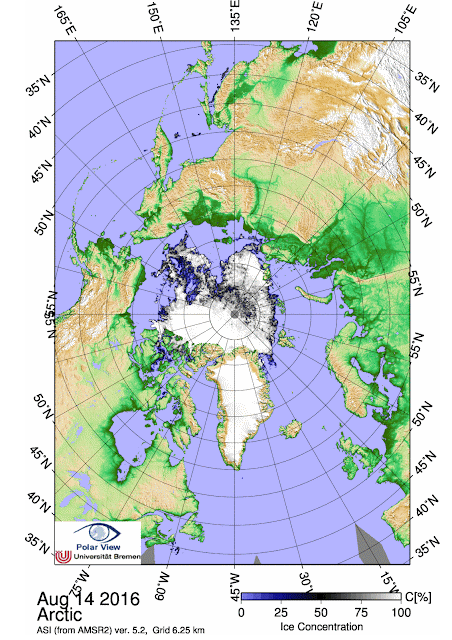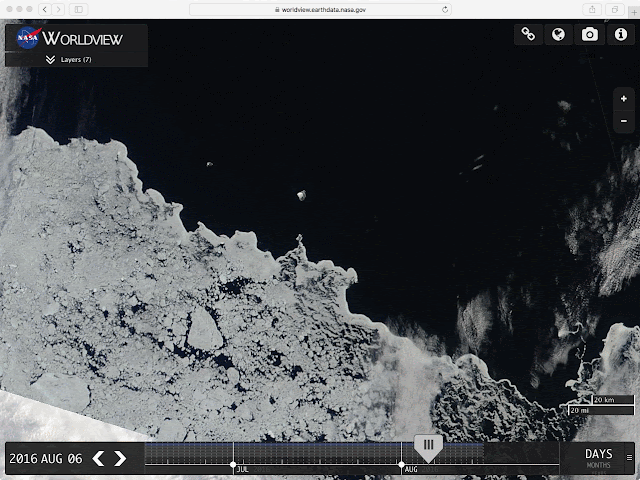~ Rotation of entire sea ice pack appears to be counterclockwise.
~ Low pressure centre still not at the Pole, most of yesterdays sea lakes vanished by strong winds.
~ Cyclone centre expanded near adjoining sea water areas.
The Cyclone Centre was about 85N 180W Longitude all day, it expanded the open water there quite dramatically, and this is not finished expanding:
Most August 15 great lakes creations by smaller Low were "closed" by wind movement away from the centre of the new Cyclone. However there is far larger opening at 85 N than the day prior.
The Cyclone seems to have affected the entire remaining sea ice pack:
The Pack From Fram Strait to Banks Island Canada seems rotating counter clockwise.
The rotation was also captured by AMSR2:
The counterclockwise rotation of the entire pack has doomed the Wrangel Island sea ice panhandle much quicker, warmer sea water is about to seriously invade the Laptev sea region as well.
Wherever the cyclone centre will remain steady, there will be wider open water, ECMWF seems to place this cyclone away from North Pole towards East Siberian Sea. So it seems the Pole area was spared, for now, from even more greater open water as never seen before. WD August17,2016
















